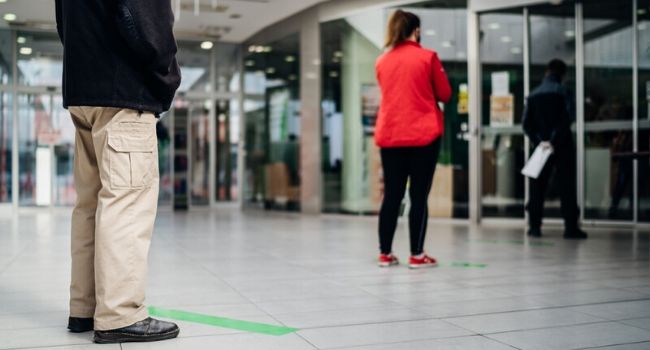
How Security Companies Are Developing AI Cameras to Measure Social Distancing and Mask Compliance
A number of companies are either adding new features in response to the COVID-19 threat or developing new systems to identify if individuals are obeying guidelines.
- By Haley Samsel
- May 19, 2020
While the demand for thermal cameras with fever detection capabilities has skyrocketed during the coronavirus pandemic, video surveillance companies are hard at work on systems that could help stores and other businesses measure social distancing compliance and conduct crowd control.
According to reporting from Fast Company, at least three companies are developing ways to outfit traditional camera systems with artificial intelligence that would make it possible to alert employees when people are standing too close to each other -- closer than six feet apart -- or not wearing a required mask.
People-counting cameras have been on the market for years, particularly for retail businesses seeking to track how customers navigate their stores. But these systems, including one in the works at Motorola Solutions, would go a step further and identify social distancing behaviors so that shoppers could come back to a store when it was less crowded.
“You already are hearing about things like ‘Waze for occupancy and people movement,’ as opposed to vehicle movements—not just self-reporting, but automated reporting on traffic information of people in different indoor locations and public areas,” Mahesh Saptharishi, the CTO of Motorola Solutions, told Fast Company. “I think that’s just going to be more common until people feel safe enough.”
Hypothetically, these surveillance systems would also help managers and building planners figure out which parts of their space are more susceptible to social distancing issues and place more reminders in those areas. Motorola and tech company Camio are focusing mostly on offices and factories where managers are concerned about their employees working too closely to each other, but could expand into more public spaces as well.
Camio’s product was originally created to combat “tailgating,” or when a person sneaks into a facility behind someone who used their access card to enter the building. Now, company CEO Carter Maslan said its system can draw a grid in 3D space and allow users to detect when people are standing too close together.
Another startup, VergeSense Inc., told The Wall Street Journal that its cameras were originally designed to measure how staff were collaborating and moving about an office space. Now, its customer base, which includes Quicken Loans and Shell, are using newly developed tools to measure and score social distancing among workers.
While employers say they need this technology in order to assuage employee concerns about spreading the coronavirus at work, there is some concern from privacy experts about how this technology will be used after the pandemic subsides. Albert Gidari, director of privacy at the Stanford Center for Internet and Society, told the Journal that the biggest risk is “mission creep, even if the initial implementation is health and safety in the workplace.”
Most companies say they are not identifying individuals through their software and do not store images, but Gidari urged corporations to be transparent with workers about how they are being tracked and for how long.
“It’s not a stretch to see this as a productive-measurement tool,” Gidari added.
About the Author
Haley Samsel is an Associate Content Editor for the Infrastructure Solutions Group at 1105 Media.